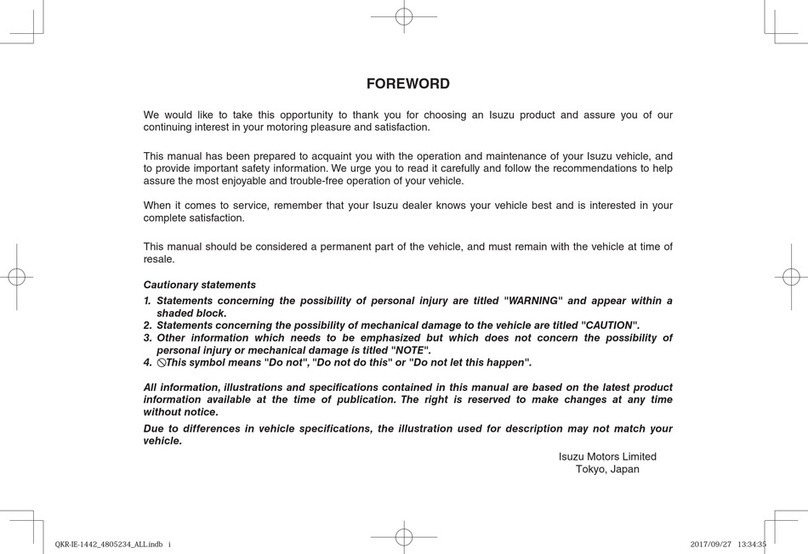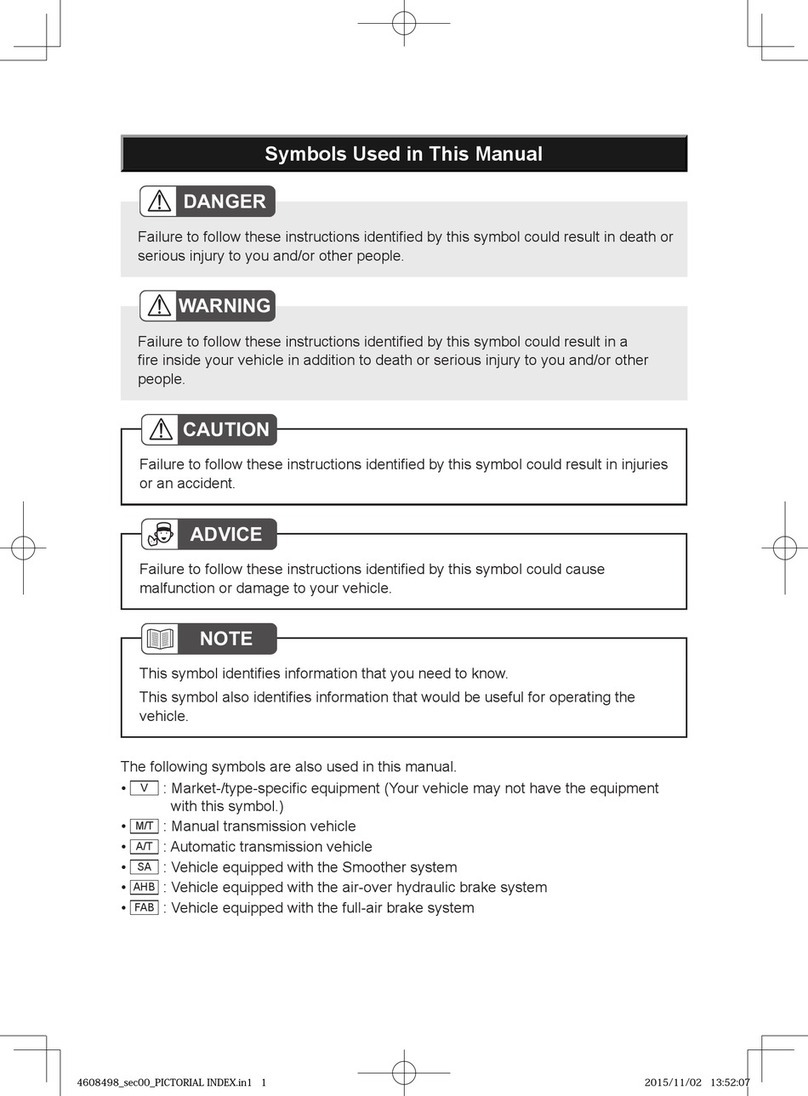i
Preface
This user manual is created to give you information on how to use your vehicle as efficient
and economic as possible. We advise you to read the information given within this manual
carefully and comply with all warnings. We would like you to know that our company will not
be liable for any material, moral problems and damages may occur from any case of not
complying the cautions given within this manual.
If you require any further information about your vehicle, you can contact the authorized
dealer or authorized service.
Always keep the user guide in your vehicle.
Due to our efforts on enhancing our vehicles, there can be adjustments on shape,
equipment and technicalareas. The information within this user manual (pictures and technical
information) are the current up to date product information and Anadolu İsuzu A.Ş. Keeps all
the rights on the changes without notice included.
Thank you for choosing this product.
We wish you a good drive.
Anadolu Isuzu Otomotiv Sanayi ve Ticaret A.Ş.
Center : Fatih Sultan Mehmet Mah. Balkan Cad. No: 58 Buyaka E Blok
Tepeüstü 34771 Ümraniye / İSTANBUL
Factory : Şekerpınar Mah. Otomotiv Cad. No: 2 41435 Çayırova / KOCAELİ
Telephone : 0850 200 1900
e-mail : isuzu@isuzu.com.tr






























